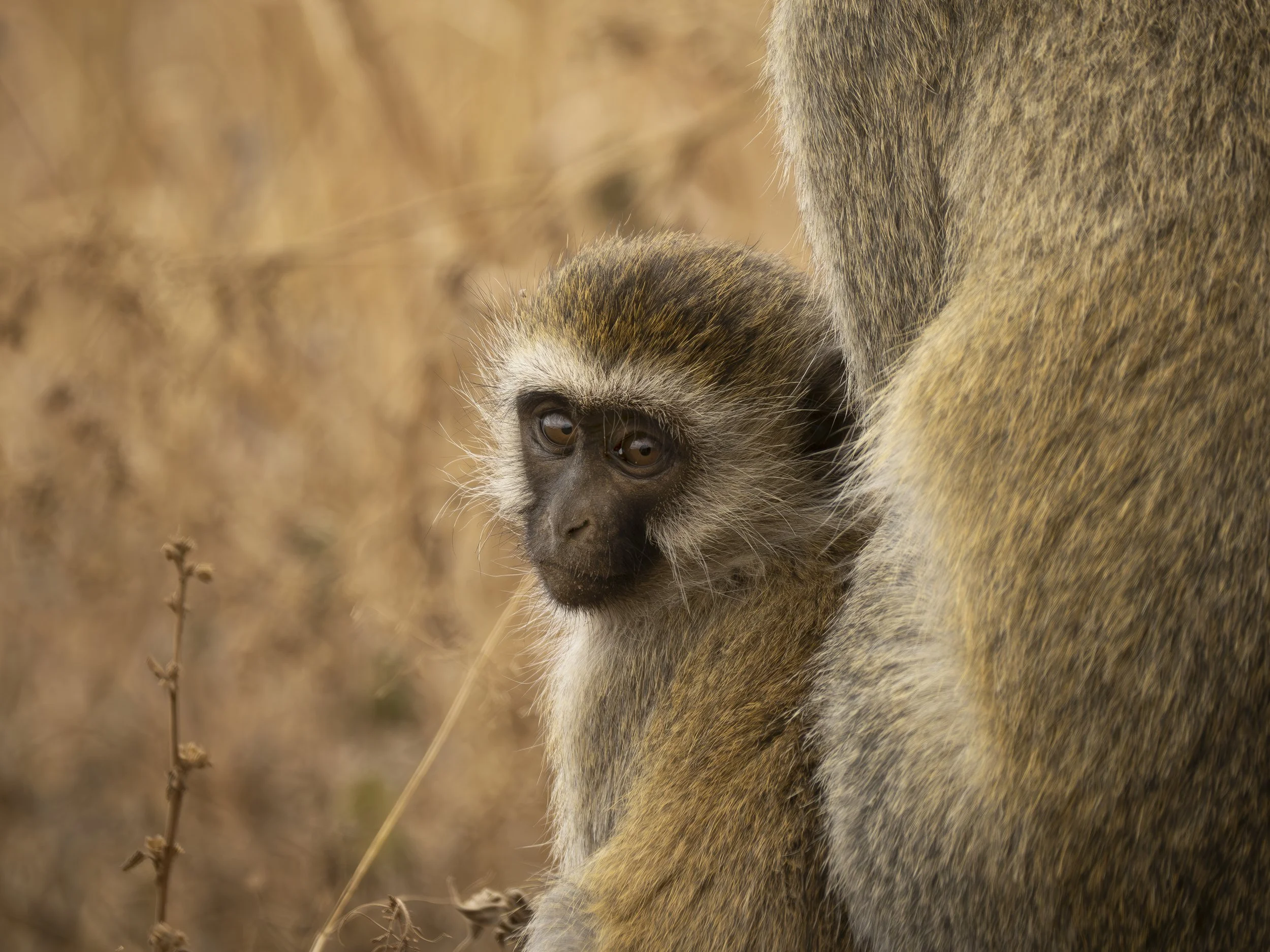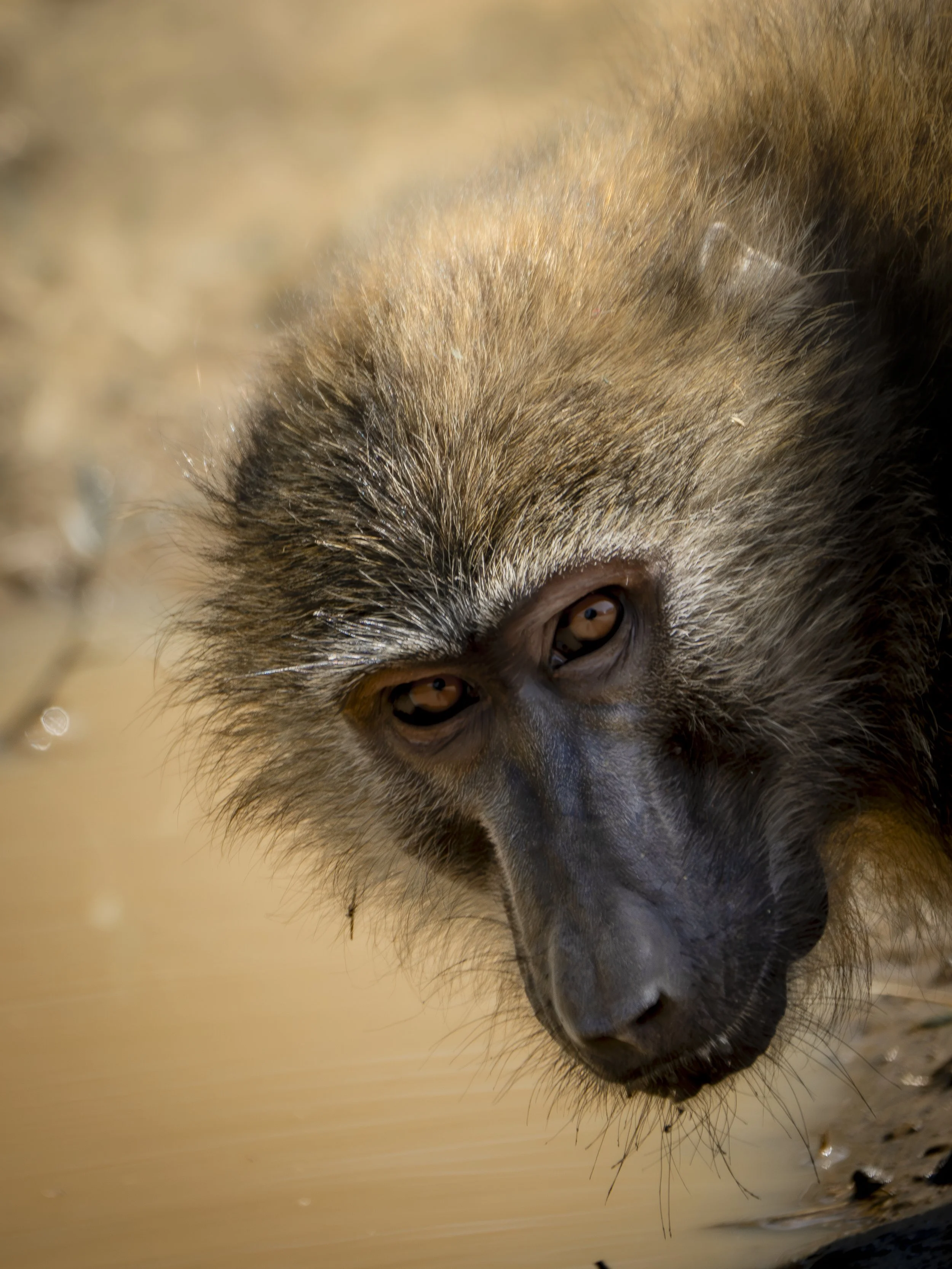Adapting to Variability in Hominin and Primate Histories
By Safina Center Fellow Alex Chege
Like baboons, vervet monkeys (Chlorocebus pygerythrus) adopt flexible strategies to survive in diverse ecological conditions. Like the genus Papio, the genus Chlorocebus consists of six geographically widespread species occupying a range of habitats including savannahs (pictured here), woodlands, mangroves, and human-modified landscapes. ©Alex Chege
Humans (Homo sapiens) have occupied even the most far-reaching locations of the globe. One of the reasons why our early human ancestors are the most widespread species—occupying diverse environments such as savannahs, tropical forests, tundra, and our own human-modified environments—is owed to our ability to adapt to numerous challenges such as climate variability and dynamic food availability.
Adapting to such variable conditions has been a hallmark trait of our own Homo lineage, evidenced by the persistence of our species, even as closely related hominins faced extinction. In the past, early Homo among other hominins—the taxonomic tribe that contained the ancestors of living apes and other members of upright walking, large-brained members of the human lineage—occupied the same region, namely Eastern Africa. During this time, a drying climate led to the retreat of forests and the expansion of grassland habitats across substantial portions of Africa. This unfamiliar environment, fluctuating with new conditions such as novel foods required hominins to adopt different strategies to meet their dietary needs. For example, despite occurring in the same area and at the same time, both early Homo and Paranthropus adopted different foraging strategies to survive in this variable environment. Paranthropus (an upright-walking, gorilla-like hominin) became an ecological specialist, foraging on grasses and sedges in riverine woodlands. Whilst this specialist strategy aided in survival in grasslands, this predisposition proved to be rather restrictive across a range of environmental contexts. Anthropologists suggest that being highly specialized in terms of diet likely resulted in the termination of this genus, leaving remains in the fossil record. Early Homo, however, became a more versatile generalist, capable of surviving in fluctuating environments, allowing the lineage to rapidly expand its range and occupy various parts of the continent. In our own history, adapting to such diverse selective pressures with flexible strategies allowed us to broaden the range of conditions within which we can survive.
A fossil cast attributed to Paranthropus aethiopicus. The specimen's large sagittal crest, flared zygomatic arches and powerful jaws suggest adaptations for chewing hard foods such as grasses, nuts, and seeds. ©Don Hitchcock, 2015, via Vienna Natural History Museum, Naturhistorisches Museum Wien.
Interestingly, similar parallels of these unsuccessful specialist and widespread generalist strategies were present among other primates. This is clear in the ‘baboon’ lineage that contains the genus Papio and the genus Theropithecus, where despite once sharing a close genetic relationship millions of years ago, both groups now have been on remarkably different evolutionary trajectories, having adapted to different contexts. The genus Papio consists of six baboon species that are widespread across the African continent from Senegal to the cape of South Africa and as far as the Arabian Peninsula. In contrast to this, the genus Theropithecus has only one surviving member, the Geladas, a highland-dwelling monkey only found in the grassland habitats of the Ethiopian Highlands and specializing in a diet consisting primarily of perennial grasses.
A Yellow baboon (Papio cynocephalus) quenching its thirst. One of the six widespread species belonging to genus Papio. ©Alex Chege
Since savannah woodland habitats face variable selective pressures such as intense droughts and seasonal flooding, primatologists have studied savannah-dwelling generalist primates as a viable analog to early Homo living in these ecological conditions. Like humans, the primates that occupy these areas exhibit remarkable dietary flexibility, with the ability to traverse between seasonally dynamic habitat types.
Similar to baboons, vervet monkeys also adopt flexible dietary strategies adapting to variable climatic extremes. For example, at the southernmost latitude of their range in South Africa, vervets contend with both sweltering heat and sub-zero temperatures. Their success is further driven by their ability to forage on diverse food items regardless of context. From June to August this year, I will conduct an observational study investigating how vervet monkeys survive in coastal areas that also exhibit pronounced seasonal variability in available food items. This work, supported by The Safina Center fellowship, is an integral part of a broader study that explores what ecological, demographic, and adaptive traits drive the exploitation of locally available food items in coastal landscapes and how vervet and hominin survival in these dynamic environments is determined by such flexible survival strategies.



